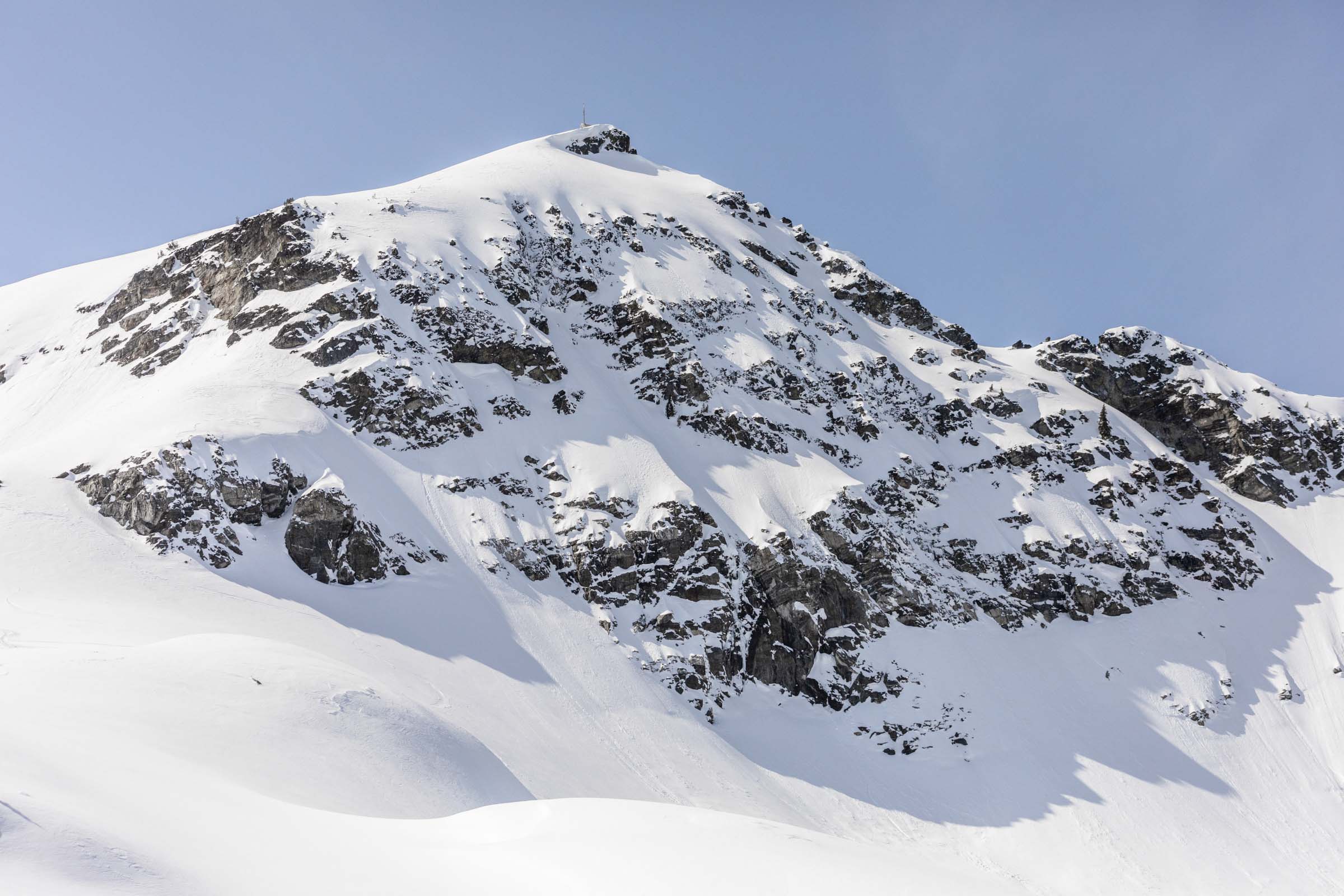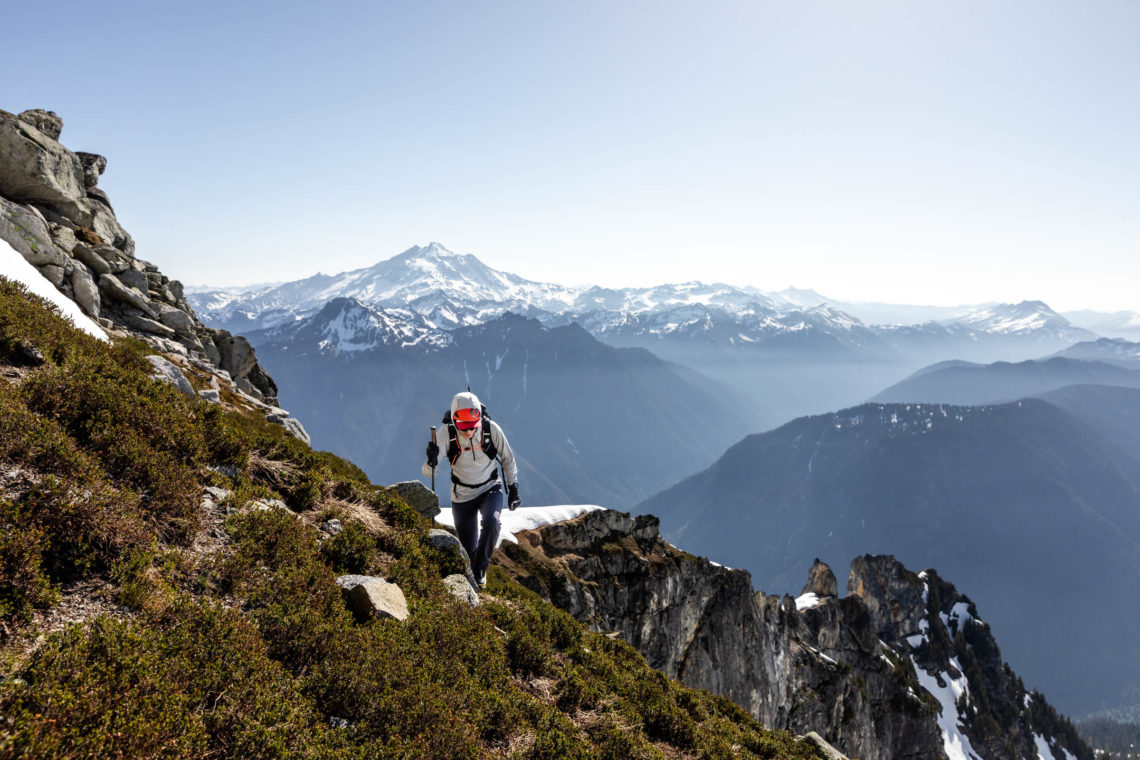
a classic cascadian caper | sloan via bedal creek
11 miles . 5700 ft gain . 7835 ft high
Henry M. Jackson Wilderness
yes i thesaurus-ed the title
Sloan. The Matterhorn of the Cascades. That one pointy peak that you spy from nearly any other Cascadian peak.
In some ways it’s a very popular peak. In others, it’s not visited by many. It’s known to be a fairly beginner mountaineering objective, so it eludes most average hikers. It’s got a mix of everything that keeps a newer alpinist on their toes and seasoned ones intrigued. It’s season is shorter than most. Ideally, you wait for the snow to mostly melt off the south-facing scramble, but then don’t wait so long that the bergshrunds appear and it becomes nearly impossible to cross moats from snow to rock. But if you judiciously time your climb, everything will fall in place. Lately that is the case for this unseasonably warm spring.
Originally, we planned to ski Hood, but again, due to the recent warm weather, we got first hand confirmation that it is unskiable and even some routes are considered “out” and unusable. Going through a list of fun peaks, Sloan stood out – it’s been on mine for so long. Some of the hesitations included the bumpy road, lack of free partners, and timing the climb. But it finally lined up. Car, gear, people and all.

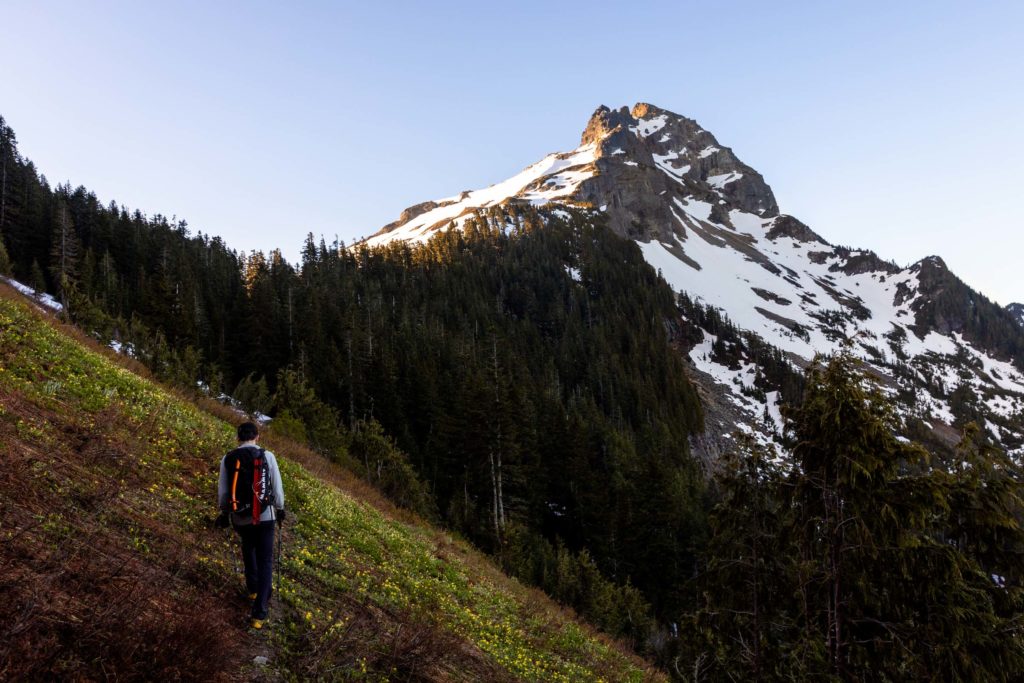
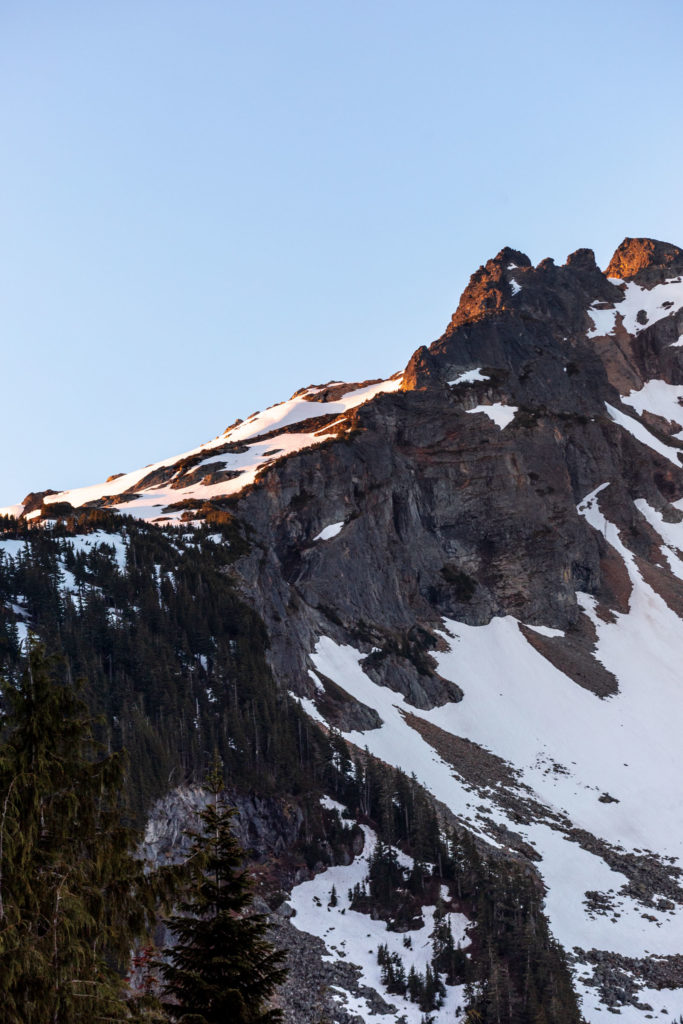
We slept at the trailhead in order to get a little more sleep before the alpine start. While you can start later, we tried to err on the conservative side and start early enough so we can get on the snow before it gets too soft. It’s so much more effort to be going up sinking snow than firm snow. We started moving at 3:30am and I really did not take any pictures of the forest. Surprisingly, while having been up the Bedal Creek before, the main trail was more overgrown with alder and other plants than the climbers trail.
GPX tracks are quite useful so you don’t have to second guess when to turn north from the main trail. But if you keep your eyes open, right after crossing one of the main streams, you’ll start to see flagging. It’s really good if you can see them, but we found it a little difficult in the dark with just headlamps shining in front of you. I’ll take the blame for that one, and all the scratches for wearing shorts too. The climber’s trail is not terribly steep. I’d call it less steep than Eldorado, but less defined, hence straying away multiple times. Generally, you just want to go slightly looker’s right instead of straight up fall-line. It mellows out at the top before dumping you above the tree line. We barely made it for alpenglow and I definitely tried to scramble on the boulders a bit quicker to get a few pictures. Without much snow, alpenglow isn’t as wildly magnificent, but I’ll take what I get.
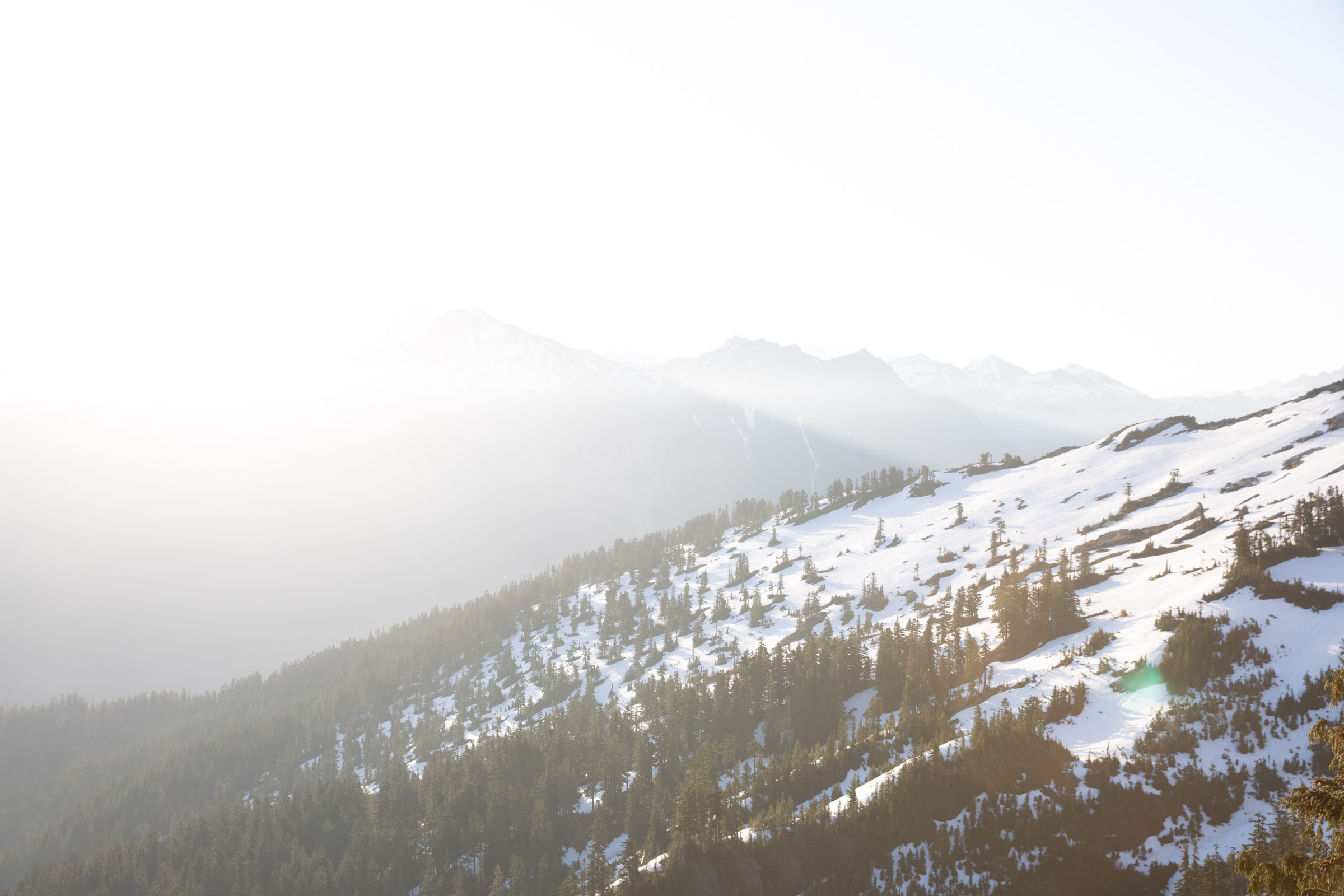
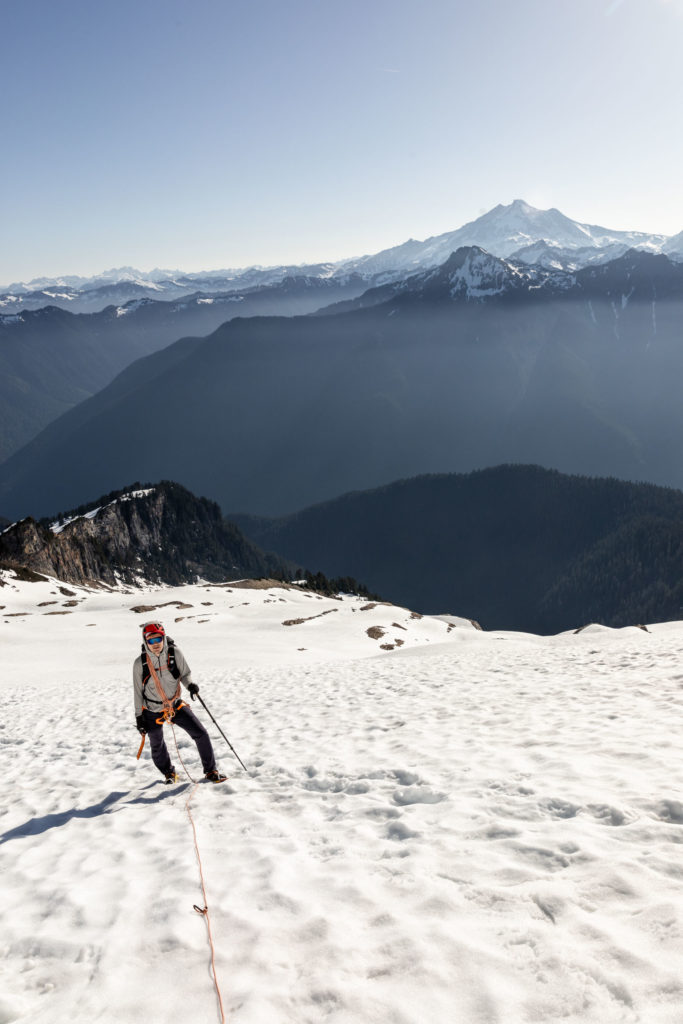
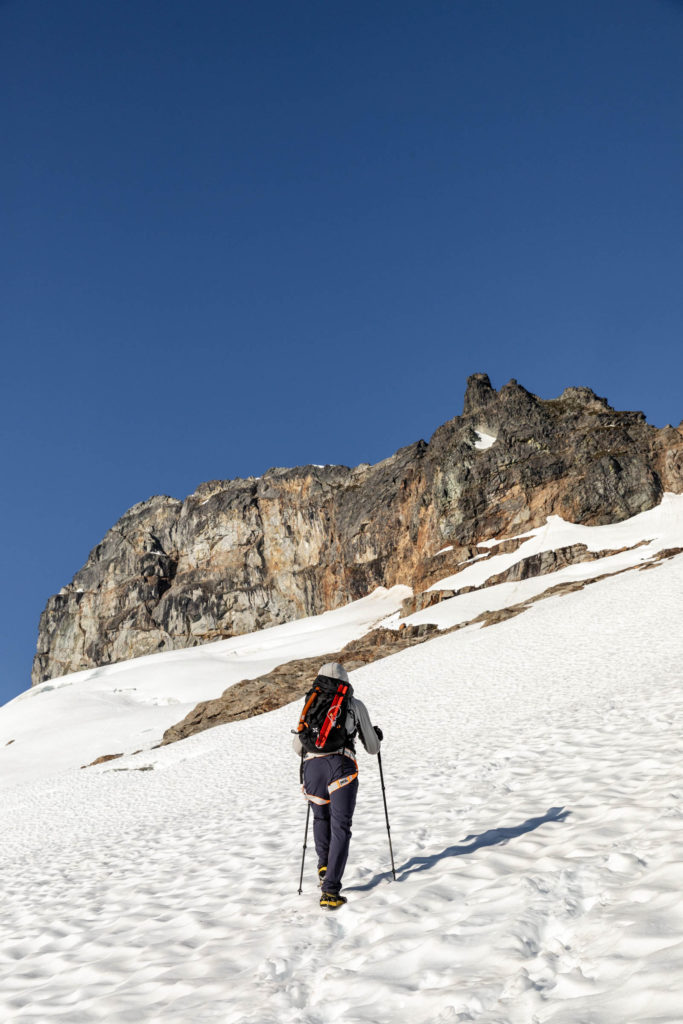
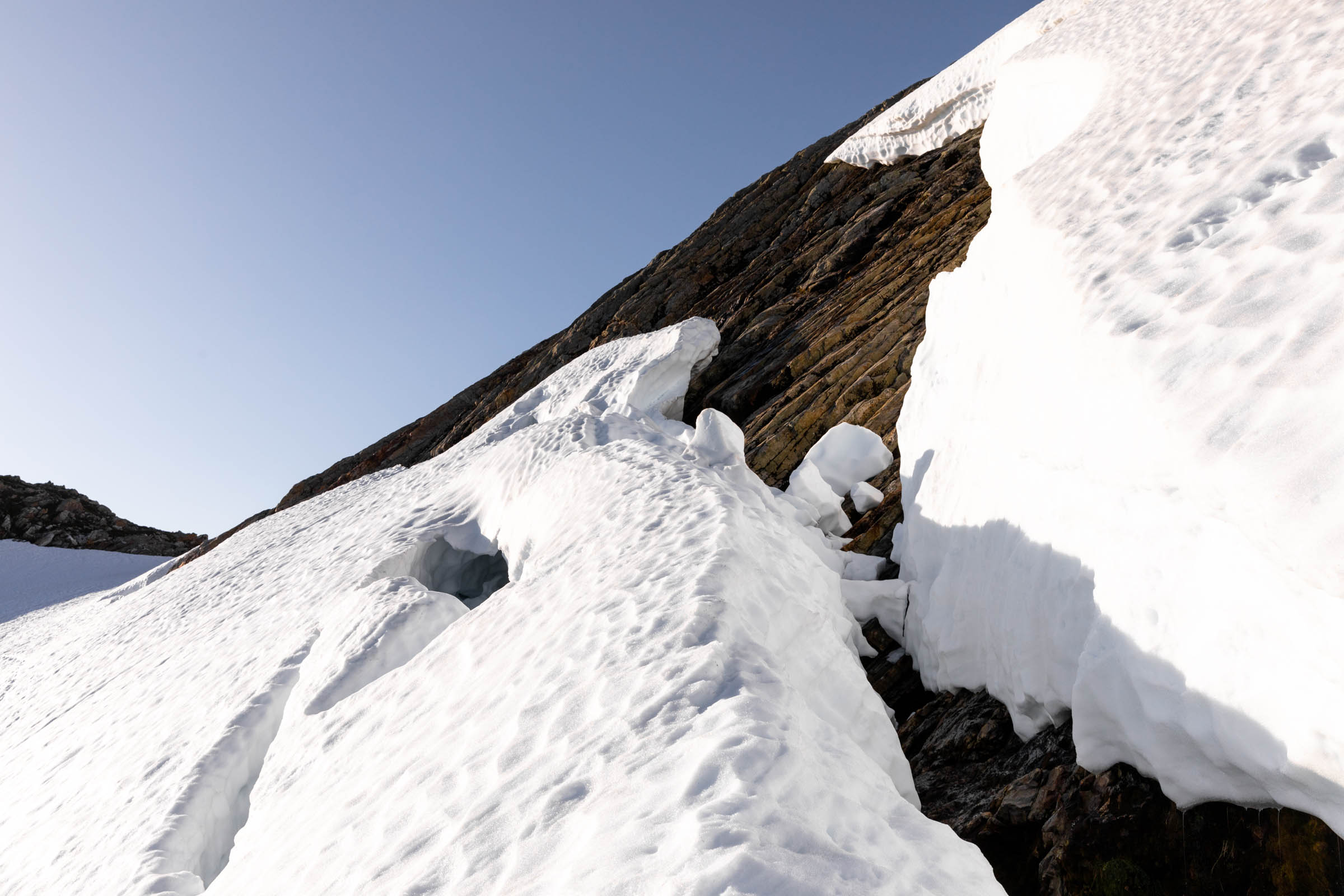
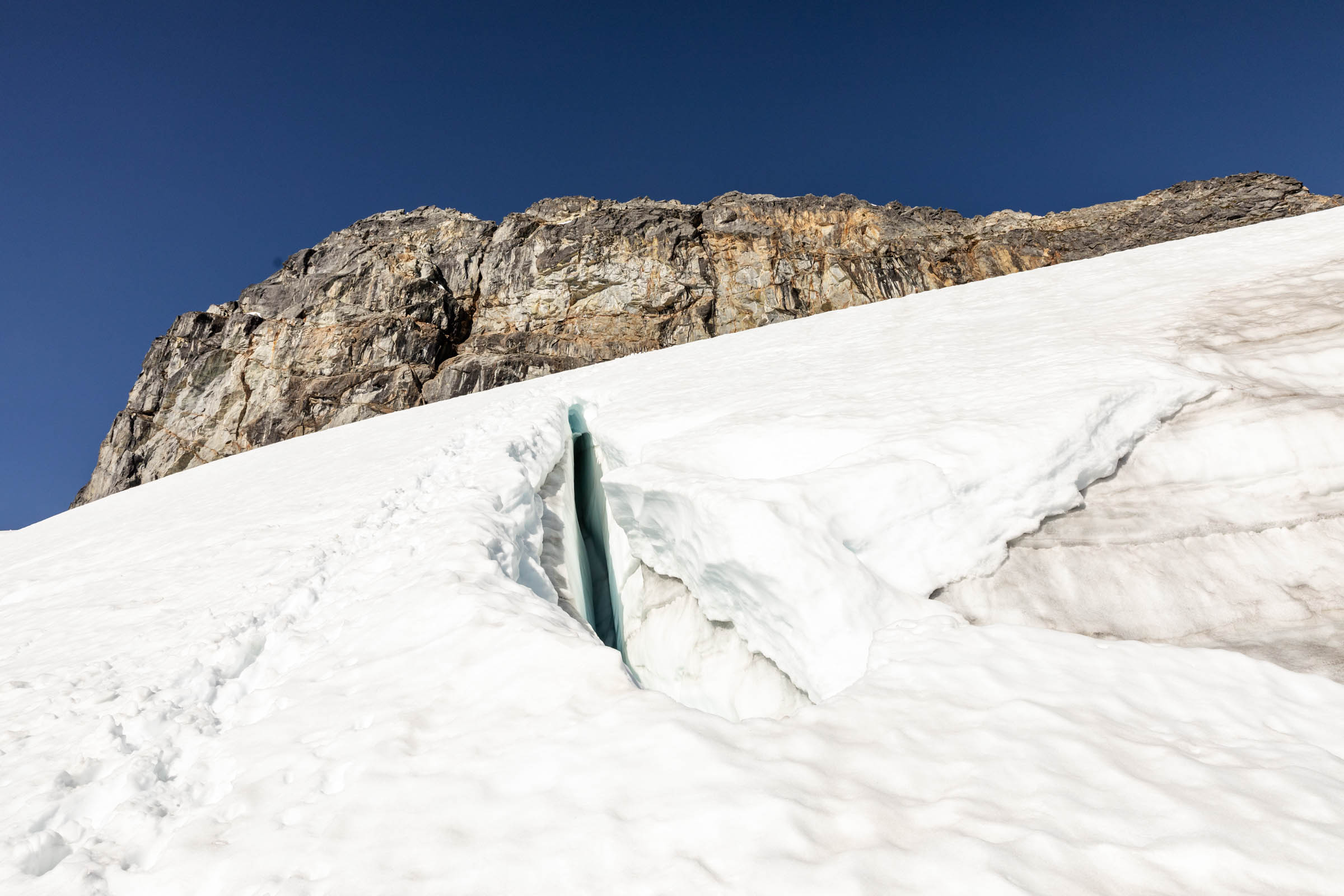
The trail is south facing at this point and pretty snow free. We did put on some spikes for the firm icy snow, which maybe with actual mountaineering boots could cut better than our trail runners. Soon we were on the trail itself, traversing over to the saddle between Bedal and Sloan. We found two tents and tried to be quiet as we put on our gear again before crossing into the sun and the east facing snow. Here, views of Glacier Peak were spectacular. And also here, we’d be in full sun for the rest of the climb.
After the first snow field, we reached the ridge where the glacier started. We navigated to the furthest most rocks before roping up. The snow was still fairly firm, but microspikes and aluminum crampons both worked. Or I suppose actual mountaineering boots with a firm sole would suffice too. The next day different friends went up without roping up. This is all personal risk tolerance, but since we brought the gear, it seemed nice to practice anyway!

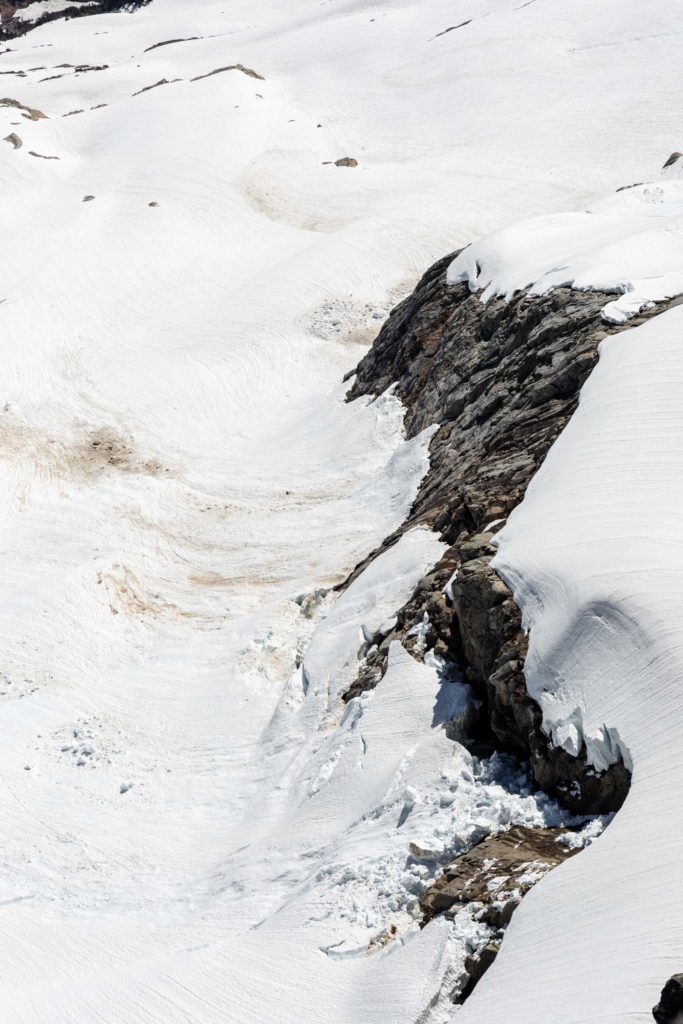
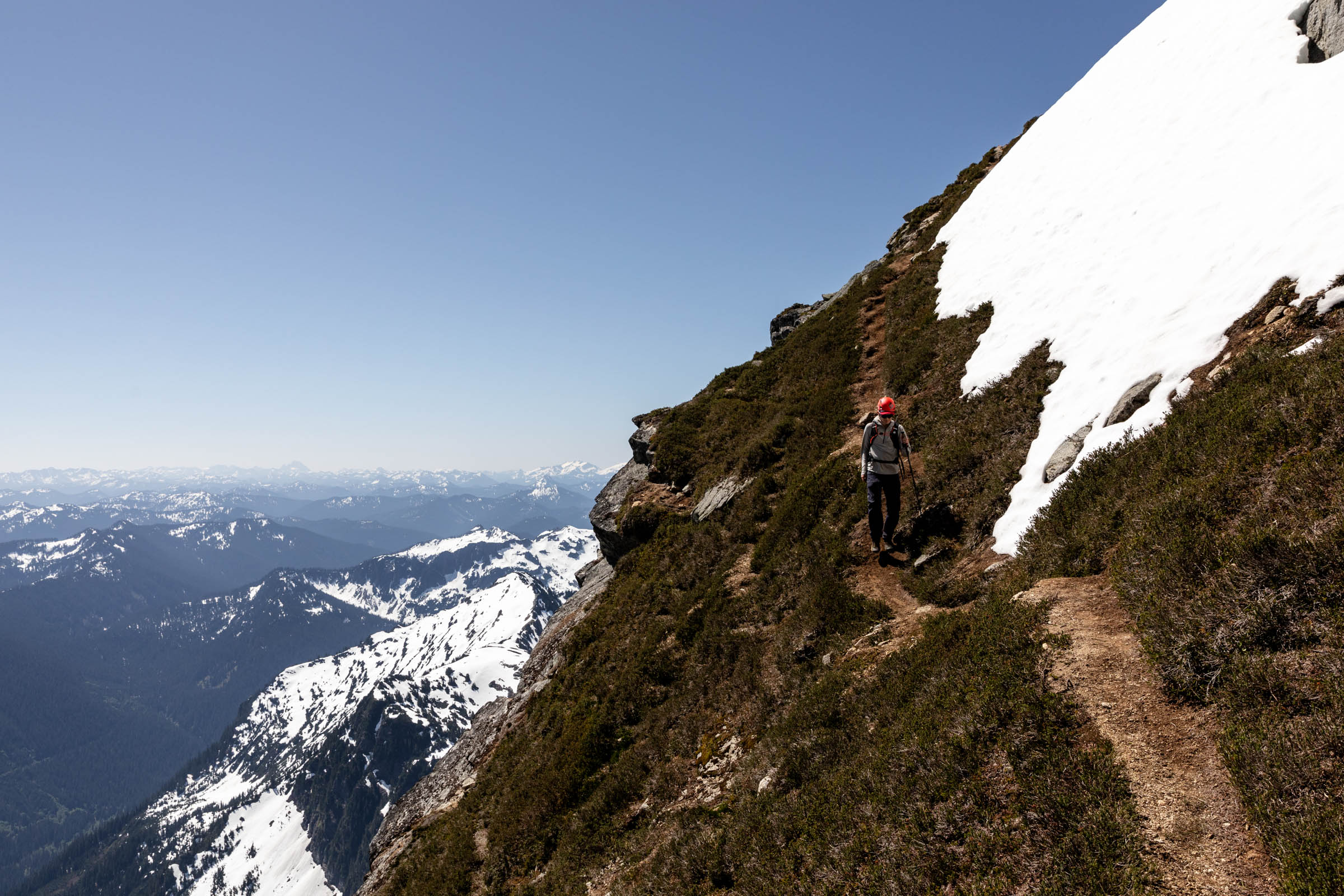

Moving on a rope team is often slow, but we made our way weaving between more than a handful of cracks in the snow. Before long, we had crossed the glacier and onto the rocky scramble again. We left our glacier gear at the base, a common thing to do to lessen your pack weight and minimize transition time. Since it was still early season, we had to skirt under a few snow patches, but generally, there’s a good heather terrace that allows you to step easily on the vegetated slope. We only caught the true trail on the way back down. Due to the snow, we had to go off the normal route a few times, which caught us in some moves I’d consider class 3+ for the exposure and big reaches. I had a grand ole time on the scramble, almost wished it was longer but I think I’d still prefer Del Campo over this scramble. The moves are just more aesthetic over there.
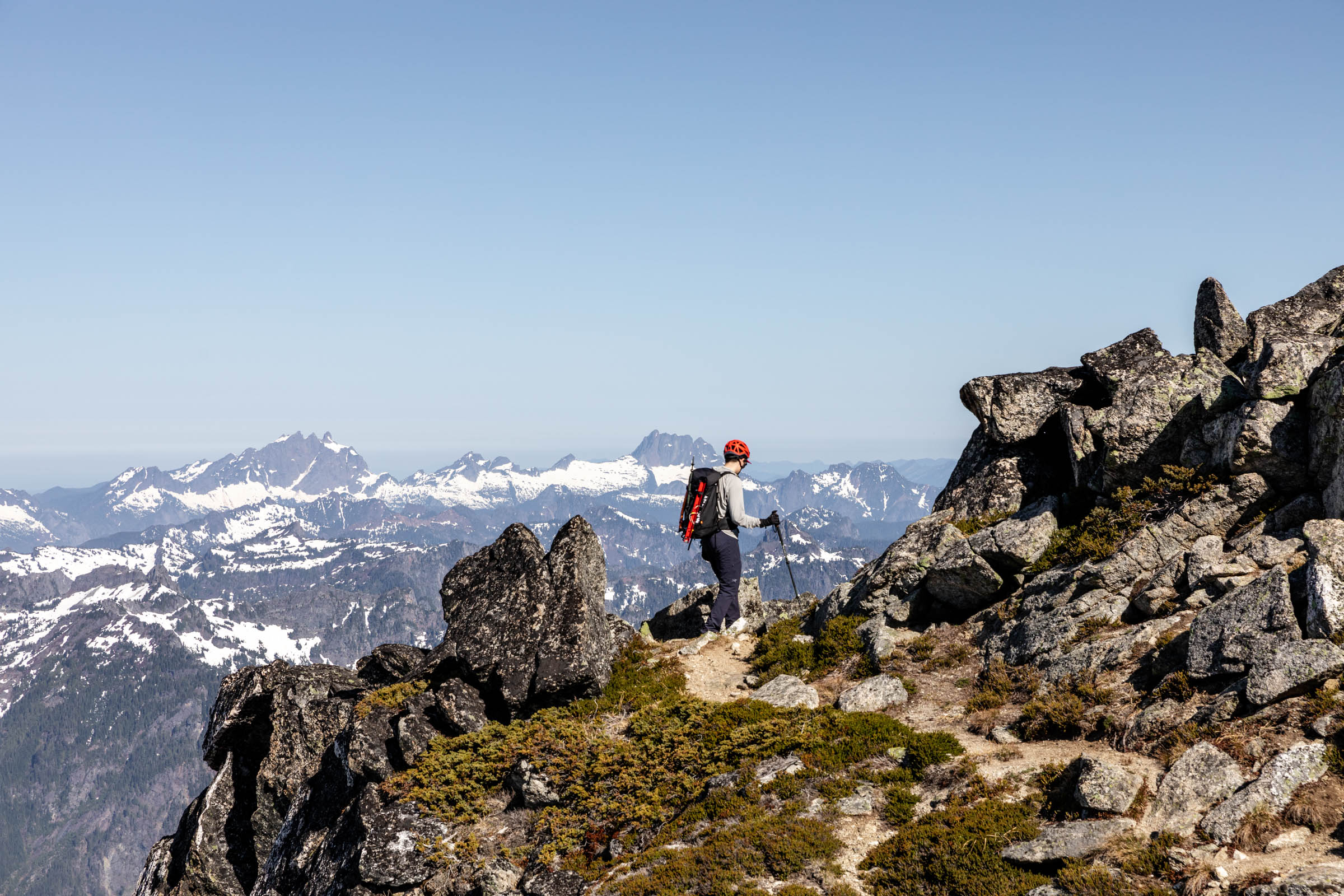
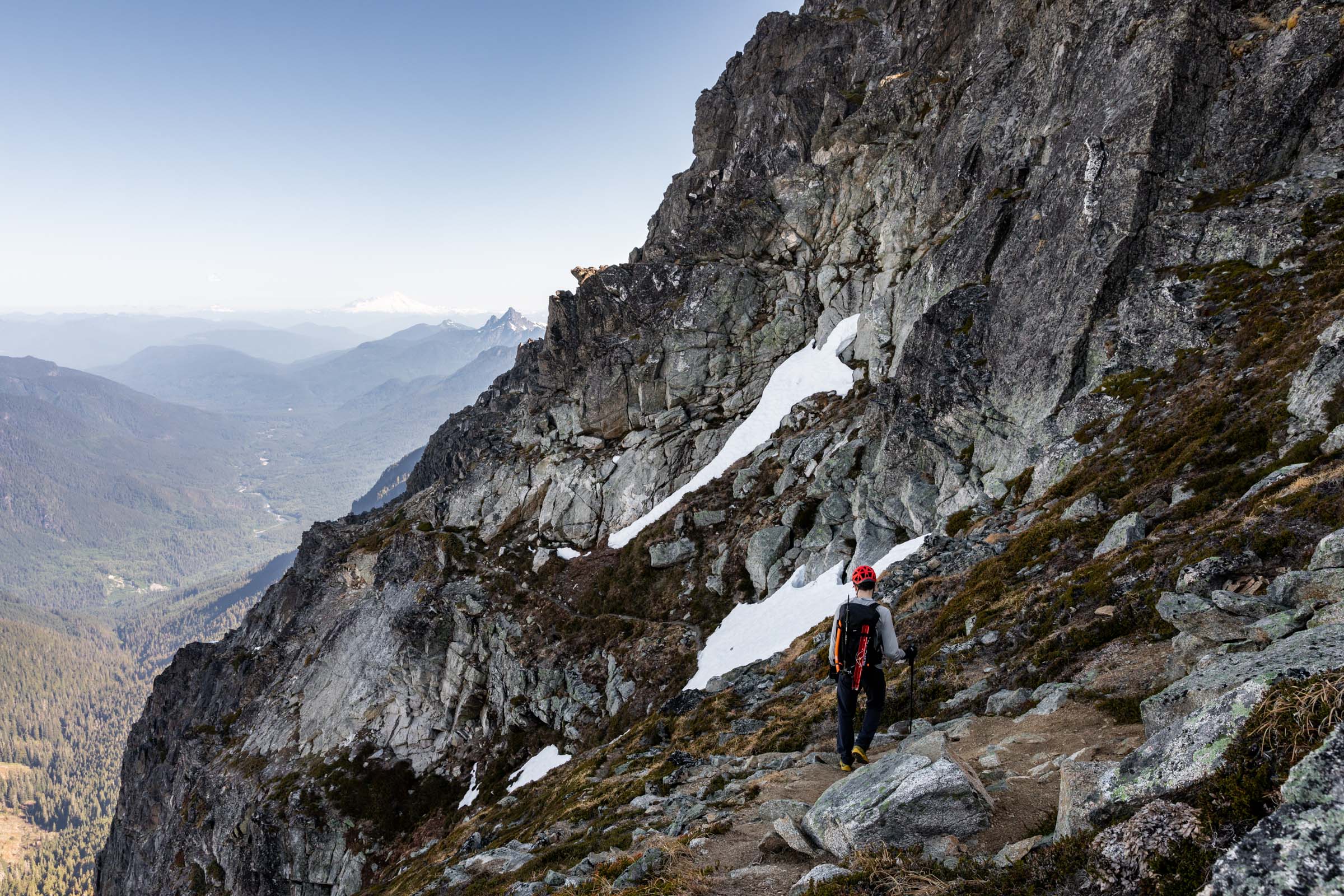
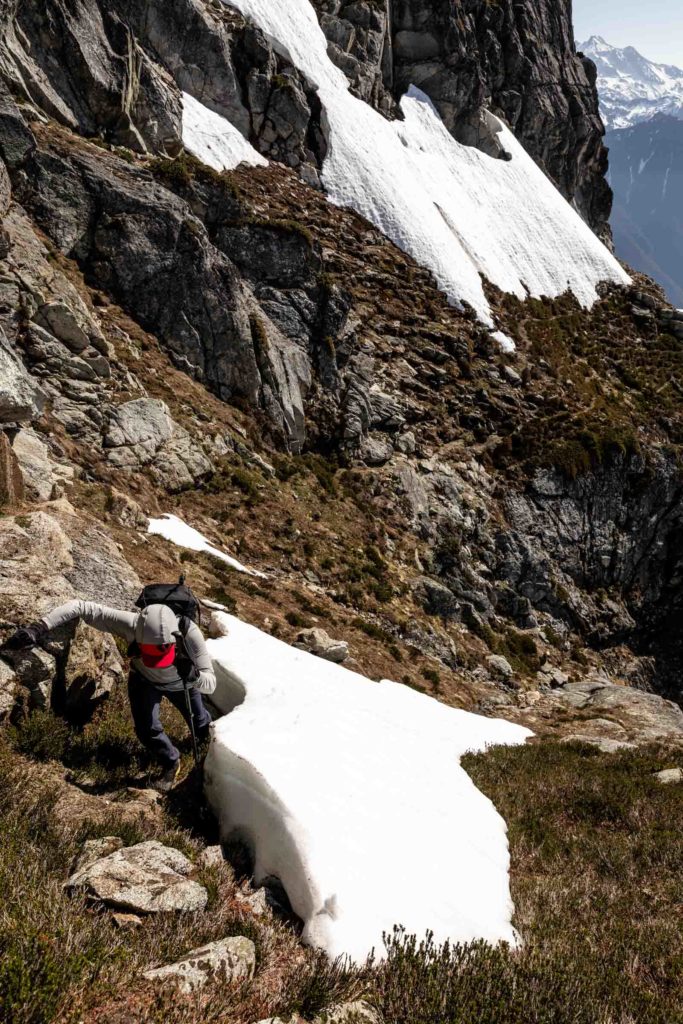
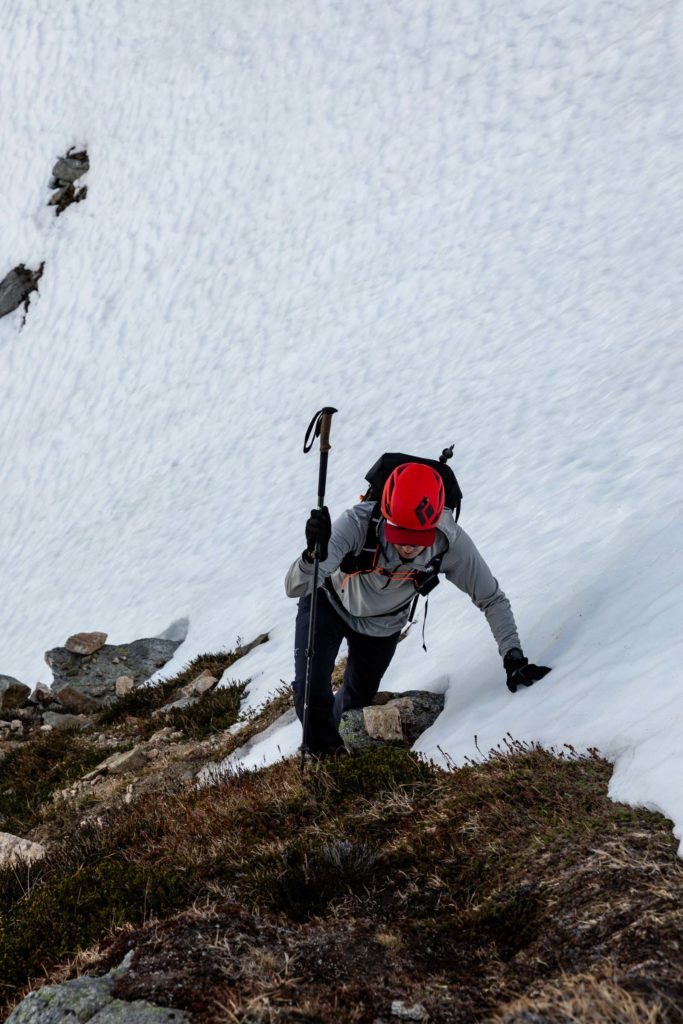
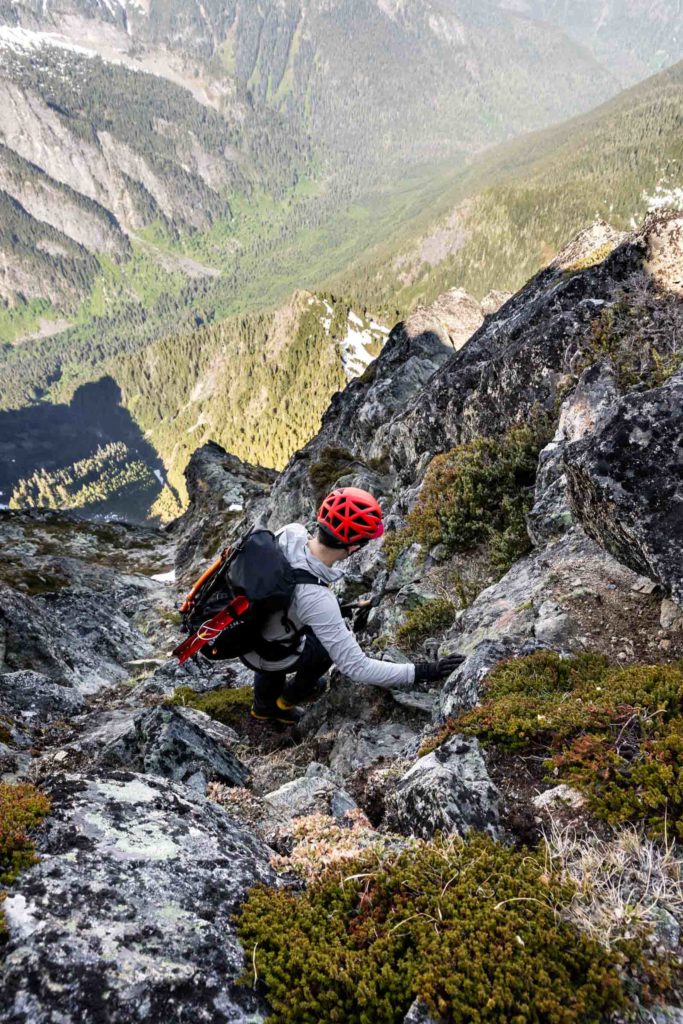
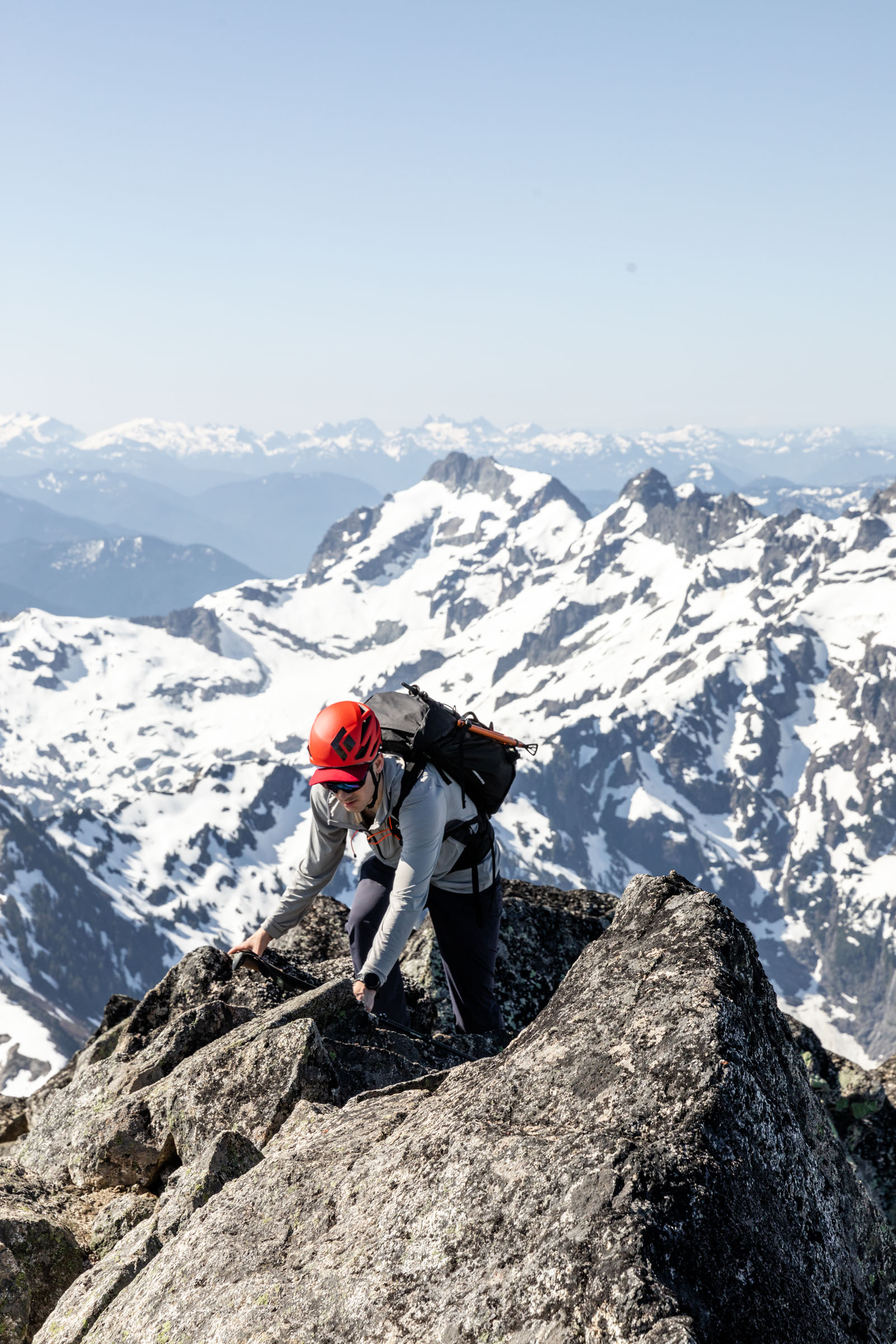
As we made our way up the corkscrew, we got more and more views, seeing a side of the Monte Cristo group I hadn’t before. On the summit, it felt like the perfect summer day. Lazy, long break, soaking up the views. It was very windy on top, but the wind would die down as soon as you hid next to a rock or descended. Before we headed back down, we observed our tent friends moving up the glacier and ran into them as they hopped off the glacier. 4 other people came up much later for a day trip and then we had the mountain to ourselves again. Getting down the climber’s trail in daylight was so much easier. We hardly missed any flags! But the main trail schwack was definitely longer than I had remembered on the way up. Funny how darkness and foggy morning brain makes you lose track of time.
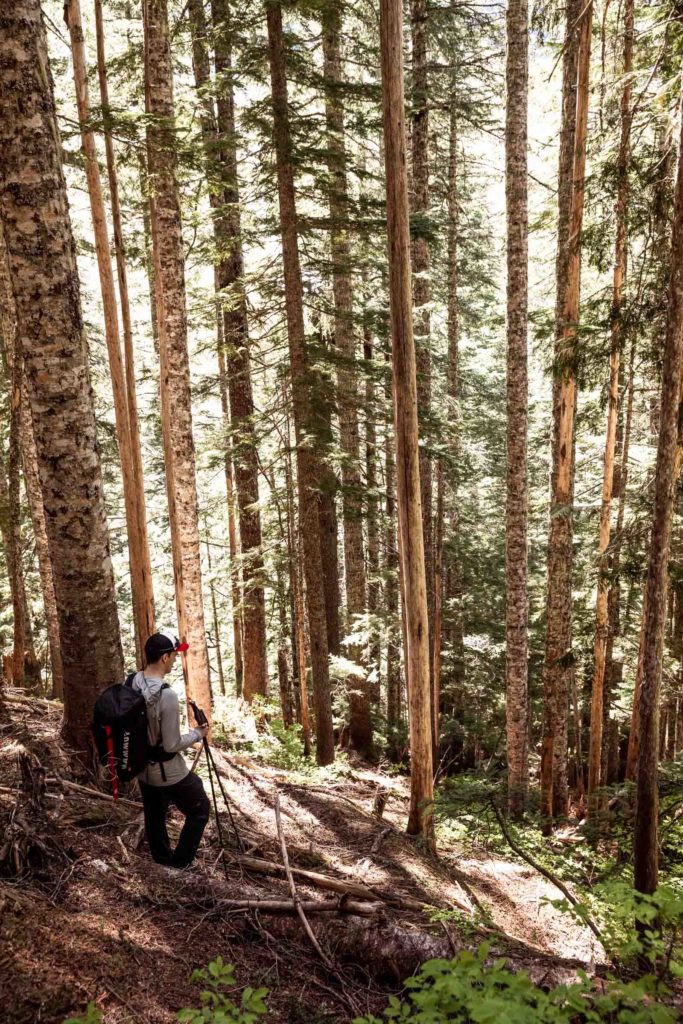
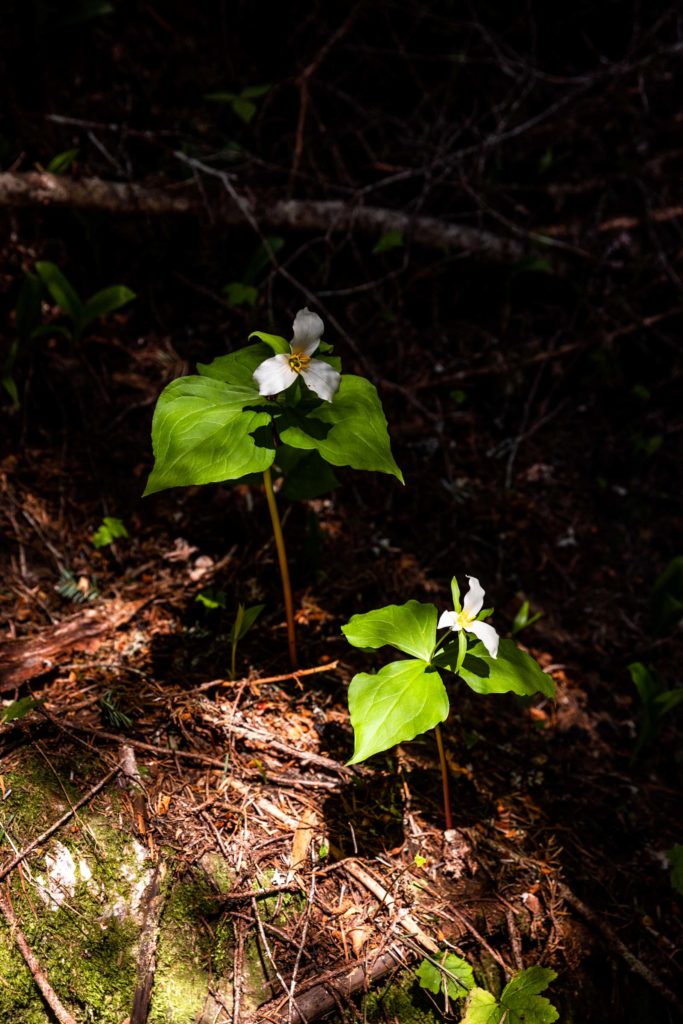
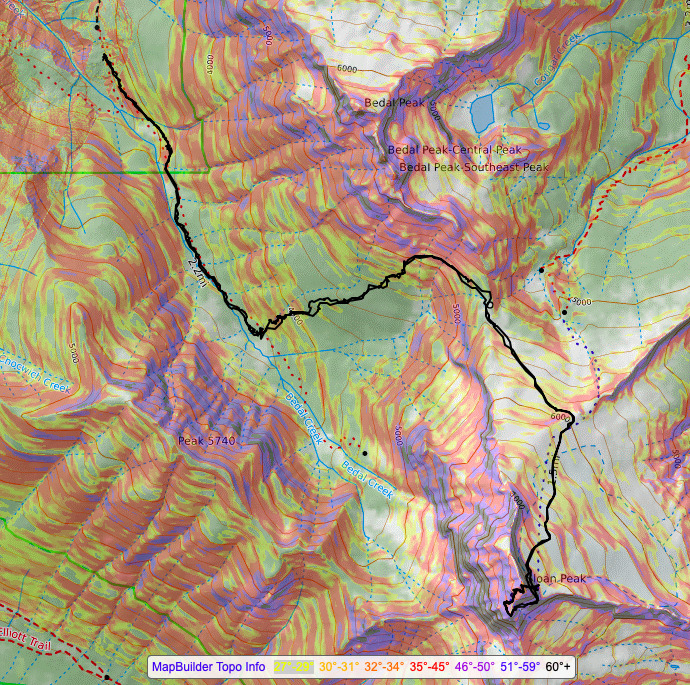
Notes
- Check trip reports on facebook groups and such for conditions – if you’re the first one out there you might be surprised what you’ll find. And if you help others out with eyes on the snow, the flood gates will open (actually not that much, but people will thank you!)
- Sloan is best done when most of the snow is melted off the scramble but the glacier is still fairly filled without impassable cracks.
- There’s good flagging up the climbers trail from Bedal Creek, but the main trail itself is fairly overgrown.
- The North Sauk approach requires crossing a stream using creative methods from wading to finding crossings to pack rafting. Both approaches meet on the glacier.
- We took 11.5 hours car to car with a few long breaks.
Photos shot on Canon 5D Mark IV
You May Also Like
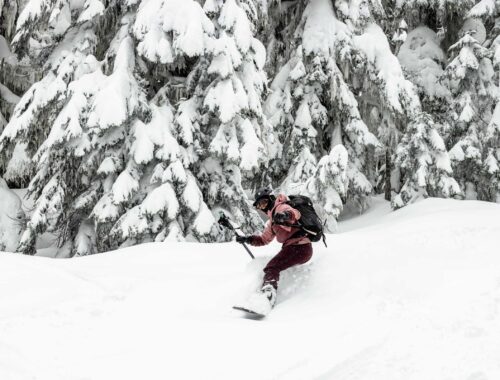
trees and powder | yodelin ski tour
March 25, 2025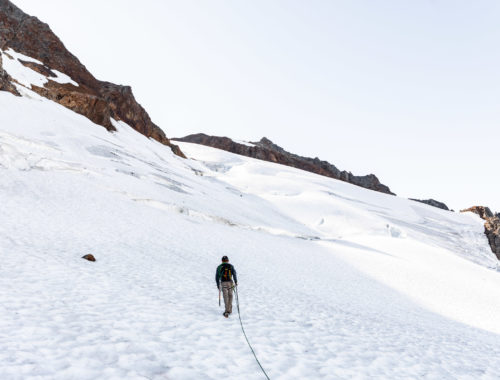
double trouble | boston-sahale traverse c2c
September 12, 2022